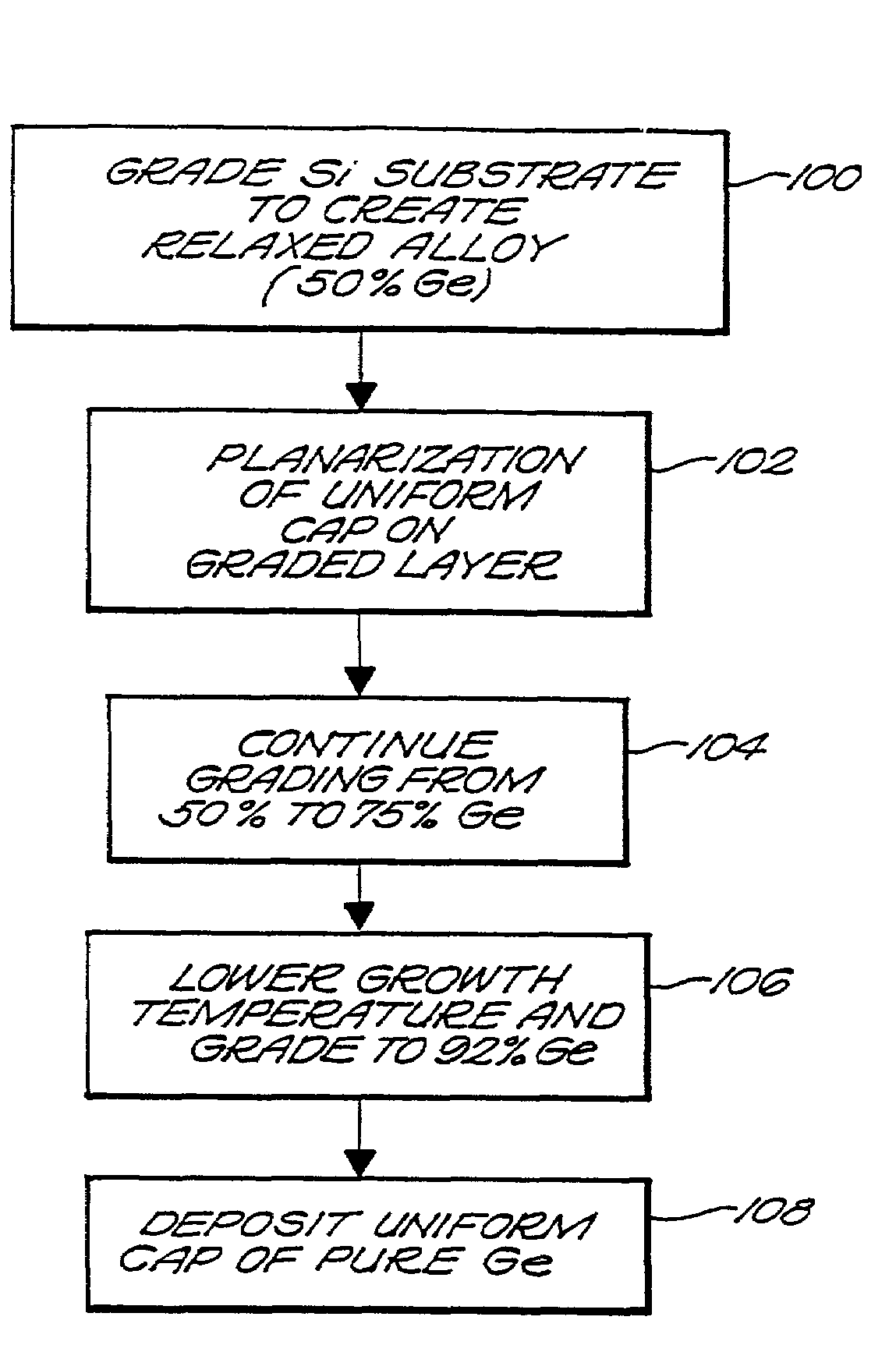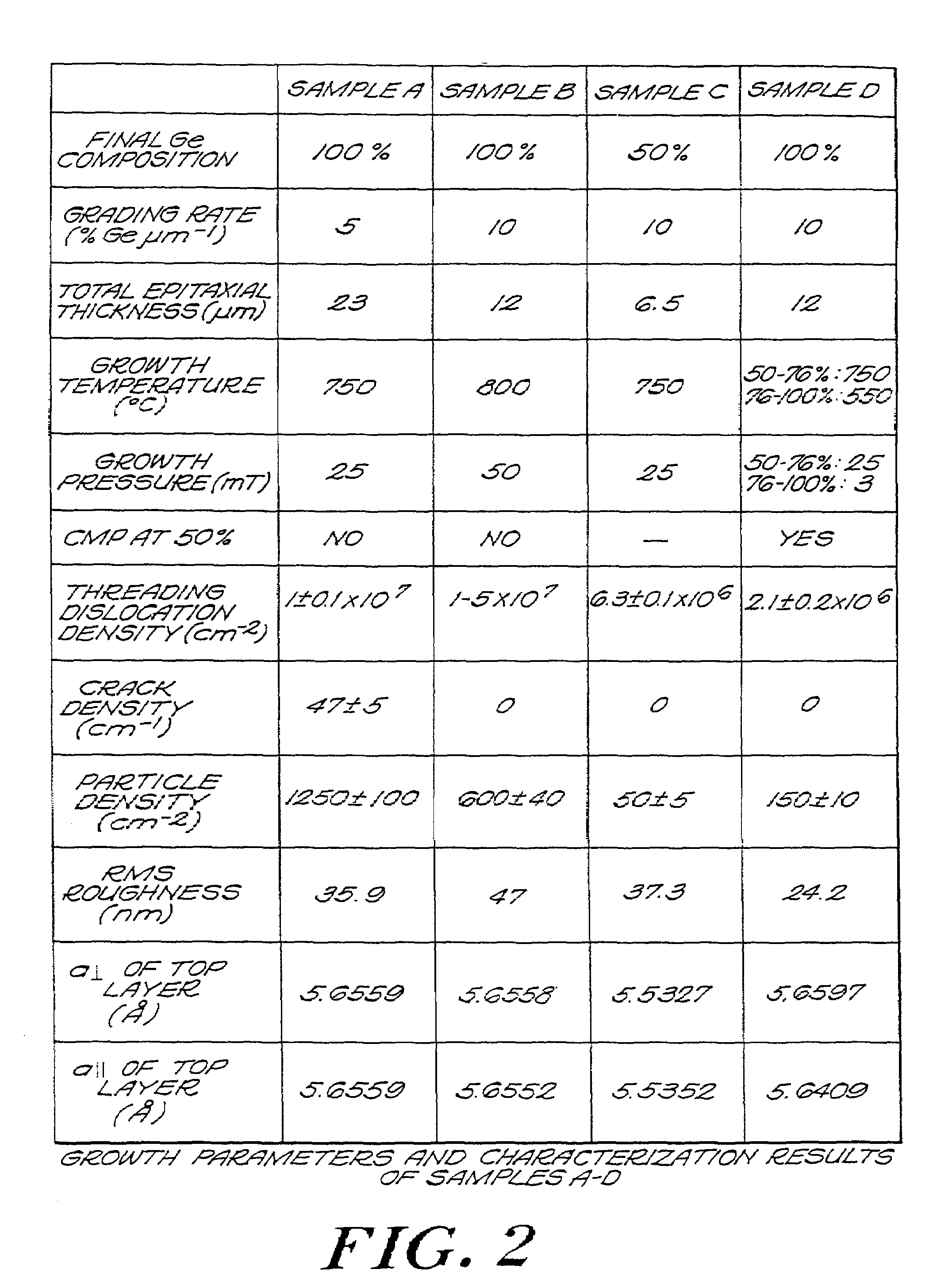Controlling threading dislocation densities in Ge on Si using graded GeSi layers and planarization
a technology of gesi layer and planarization, applied in the direction of light-sensitive devices, capacitors, electrolytic capacitors, etc., can solve the problems of dislocation pile-up, three-dimensional misfit dislocation network, and dislocation dislocation,
- Summary
- Abstract
- Description
- Claims
- Application Information
AI Technical Summary
Benefits of technology
Problems solved by technology
Method used
Image
Examples
Embodiment Construction
[0018]It has been previously shown that although composition-graded GeSi layers are a viable means to relax GeSi alloys on Si for concentrations 7 cm−2), and the density is certainly greater than relaxed Ge30Si70 on Si using this method (˜7×105 cm−2). The grading rate for such defect densities in Ge30Si70 is 10% Ge per micron of thickness.
[0019]In order to reach the desired goal of lower threading dislocation density, the grading rate is decreased to 5% Ge per micron of thickness. From experience, a lower grading rate will lower the threading dislocation density. However, it was found that the threading dislocation density was nearly equivalent to the 10% Ge / micron grading rate, cracks developed due to the thermal mismatch strain, and many particles were found due to what is believed to be gas-phase nucleation of GeSi since germane cracks at much lower temperatures than silane.
[0020]The major problems that need to be controlled in the semiconductor structure are the cracking and the...
PUM
 Login to View More
Login to View More Abstract
Description
Claims
Application Information
 Login to View More
Login to View More - R&D
- Intellectual Property
- Life Sciences
- Materials
- Tech Scout
- Unparalleled Data Quality
- Higher Quality Content
- 60% Fewer Hallucinations
Browse by: Latest US Patents, China's latest patents, Technical Efficacy Thesaurus, Application Domain, Technology Topic, Popular Technical Reports.
© 2025 PatSnap. All rights reserved.Legal|Privacy policy|Modern Slavery Act Transparency Statement|Sitemap|About US| Contact US: help@patsnap.com



